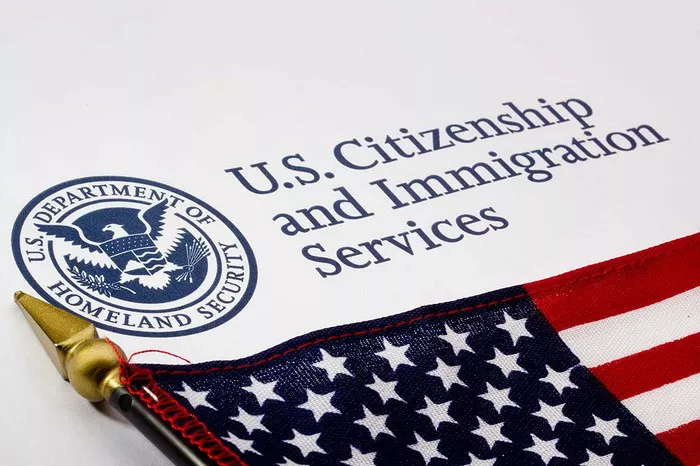Immigration has been a fundamental aspect of the United States’ demographic landscape since its inception. Over the years, the country has witnessed waves of immigrants seeking refuge, opportunities, and a better life. However, the reasons behind the persistent influx of immigrants are complex and multifaceted. In this article, we delve into the various factors driving immigration to the United States, examining economic, social, political, and environmental dynamics that contribute to this phenomenon.
Economic Opportunities
One of the primary drivers of immigration to the United States is the pursuit of economic opportunities. The U.S. economy, with its robust infrastructure, diverse industries, and relatively high wages, attracts individuals from around the globe seeking better employment prospects. Many immigrants are drawn to sectors such as technology, healthcare, finance, and hospitality, where there is a demand for skilled and unskilled labor.
For instance, Silicon Valley, located in California, has long been a magnet for skilled workers in the technology sector, offering competitive salaries and opportunities for career advancement. Similarly, cities like New York, Los Angeles, and Chicago boast vibrant economies with job prospects across various industries, making them attractive destinations for immigrants.
Moreover, the United States has a reputation for entrepreneurial spirit and innovation, attracting aspiring business owners and investors. The promise of starting a successful business or accessing venture capital funding motivates many immigrants to pursue their entrepreneurial dreams in the U.S.
Family Reunification
Family reunification is another significant factor driving immigration to the United States. Many immigrants arrive in the country to reunite with family members who are already residing there. The family-based immigration system allows U.S. citizens and legal permanent residents to sponsor certain family members for immigration, including spouses, children, parents, and siblings.
For immigrants, the opportunity to reunite with loved ones and build a life together in the United States is a powerful incentive. Family ties provide emotional support, social networks, and a sense of belonging, making the immigration experience more manageable and fulfilling.
Education and Research Opportunities
The United States is home to some of the world’s top universities, research institutions, and academic programs. As a result, many immigrants are drawn to the country in pursuit of higher education and research opportunities. American universities offer a wide range of academic disciplines, cutting-edge research facilities, and prestigious degree programs that attract students and scholars from diverse backgrounds.
Furthermore, international students often view studying in the United States as a pathway to career advancement and professional success. Upon graduation, many choose to remain in the country to gain practical work experience through Optional Practical Training (OPT) programs or pursue employment opportunities in their field of study.
In addition to students, highly skilled researchers, scientists, and academics are drawn to the United States by the prospect of collaborating with leading experts, accessing state-of-the-art facilities, and contributing to groundbreaking research initiatives. The country’s commitment to innovation and scientific advancement makes it an attractive destination for individuals seeking to further their academic and professional endeavors.
Political Stability and Rule of Law
The United States is often perceived as a bastion of political stability, democracy, and the rule of law. For immigrants fleeing persecution, conflict, or political repression in their home countries, the U.S. represents a beacon of hope and refuge. The promise of protection under the U.S. asylum system motivates many individuals to seek asylum and resettlement in the country.
Furthermore, immigrants are attracted to the United States’ commitment to upholding civil liberties, human rights, and the principles of equality and justice. The constitutional protections afforded to individuals regardless of their race, religion, or nationality resonate with immigrants seeking a society that values inclusivity and diversity.
Cultural Diversity and Opportunities for Integration
The United States is celebrated for its cultural diversity, tolerance, and pluralism. Immigrants are drawn to the country’s rich tapestry of ethnicities, languages, and traditions, which contribute to a vibrant and dynamic society. For many immigrants, the opportunity to live in a multicultural environment and experience different customs and perspectives is a source of enrichment and fulfillment.
Moreover, the United States offers opportunities for immigrants to integrate into society and contribute to their communities. Programs and initiatives aimed at promoting immigrant integration, such as English language classes, citizenship workshops, and cultural exchange programs, facilitate the transition and adaptation process for newcomers.
Environmental and Climate Factors
In recent years, environmental and climate factors have emerged as significant drivers of migration worldwide. Rising sea levels, extreme weather events, natural disasters, and environmental degradation pose existential threats to communities and livelihoods, forcing many individuals to seek refuge in more stable and resilient environments.
While climate change-related migration is a global phenomenon, the United States, with its vast landmass and relatively stable climate, is often seen as a desirable destination for climate migrants. Coastal cities facing the threat of sea-level rise, such as Miami, New Orleans, and New York City, may experience influxes of climate refugees seeking higher ground and safer living conditions.
Conclusion
The influx of immigrants to the United States is driven by a complex interplay of economic, social, political, and environmental factors. From economic opportunities and family reunification to education and research opportunities, immigrants are drawn to the United States by the promise of a better life, freedom, and opportunity.
As the global landscape continues to evolve, with shifting demographics, changing geopolitical dynamics, and environmental challenges, immigration will remain a defining feature of the United States’ identity and resilience. Embracing the contributions of immigrants and fostering inclusive policies and practices are essential for harnessing the full potential of immigration and building a more prosperous and equitable society for all.


